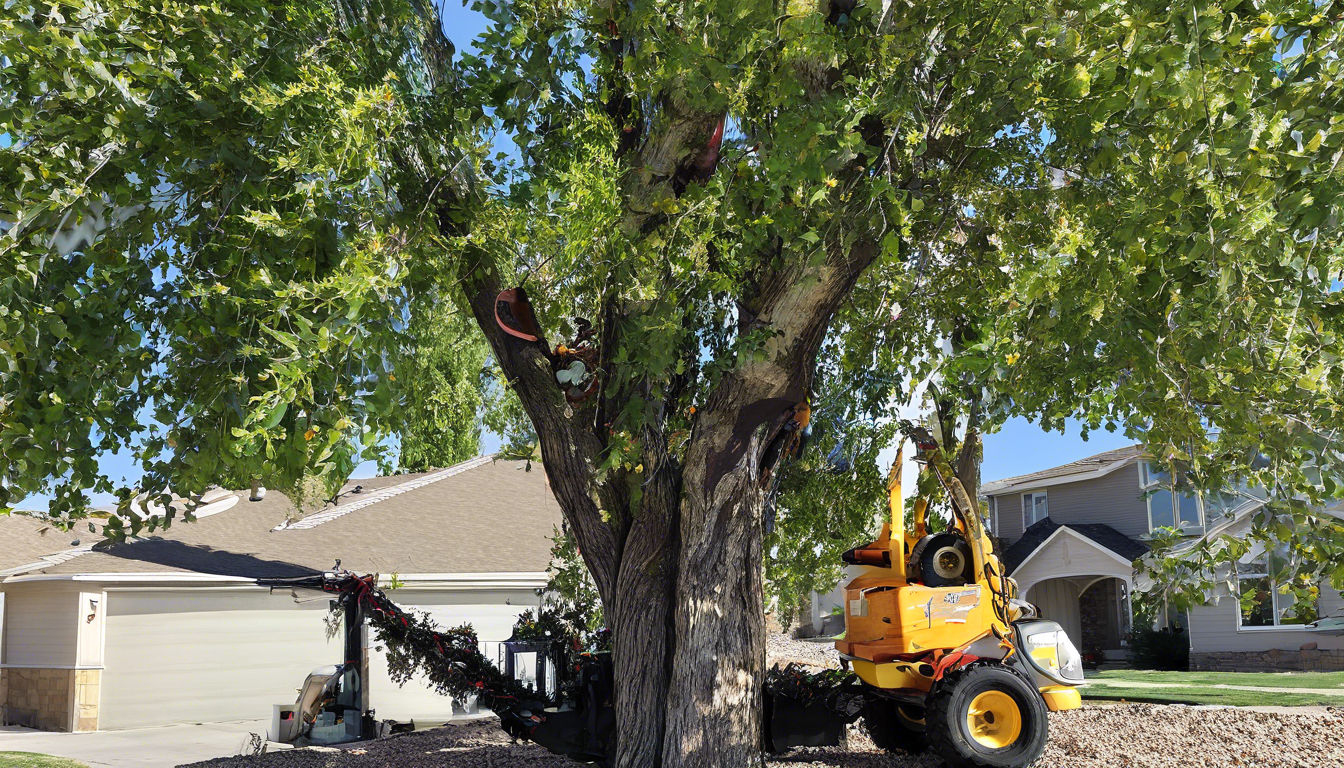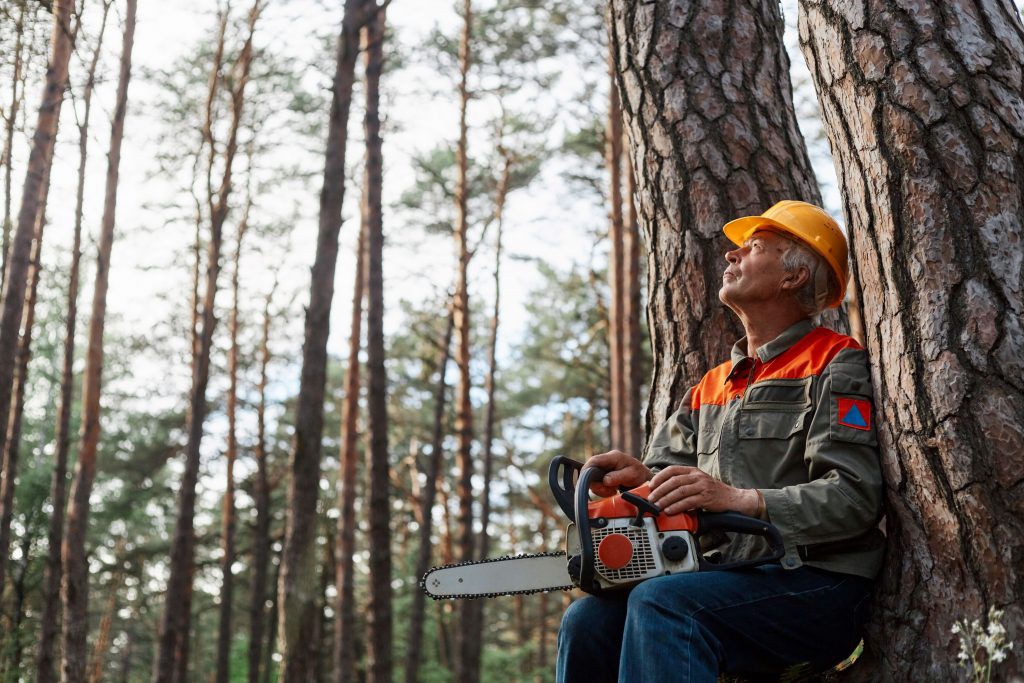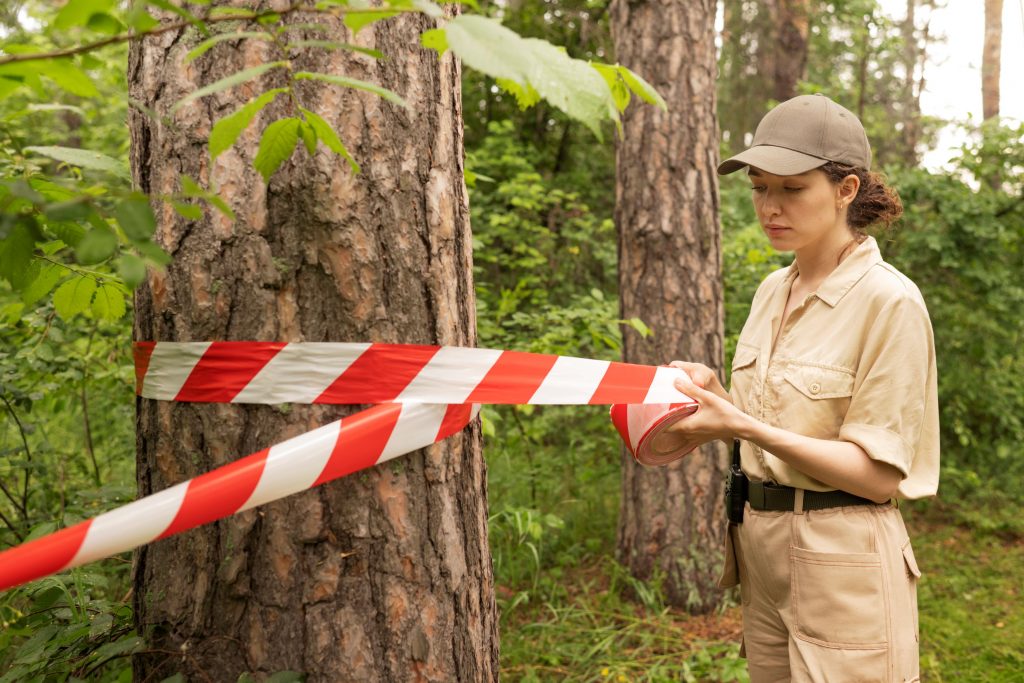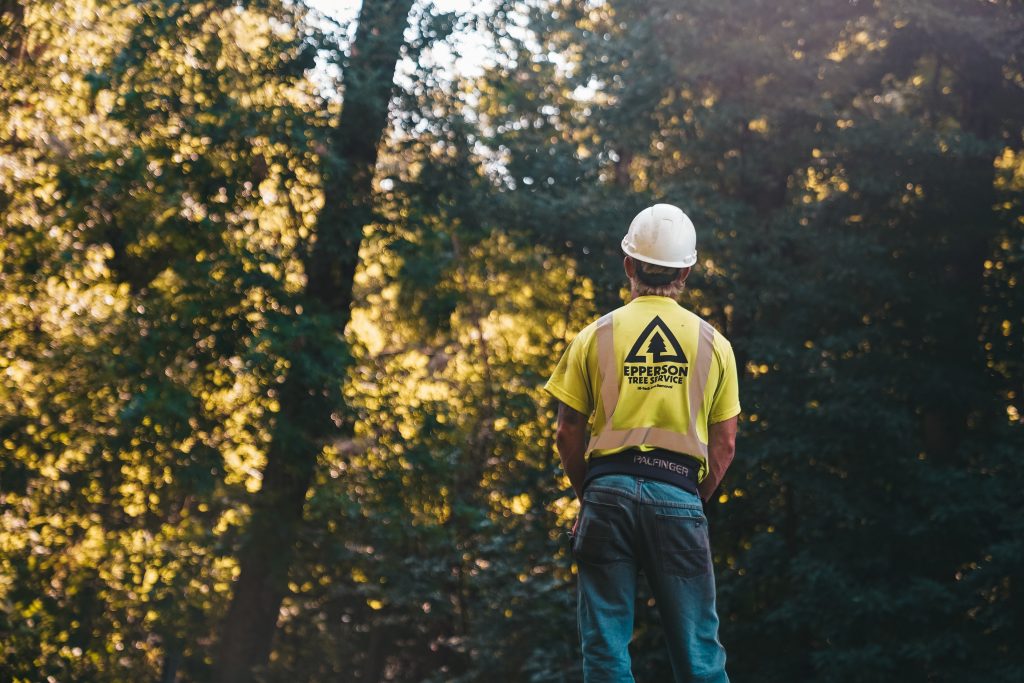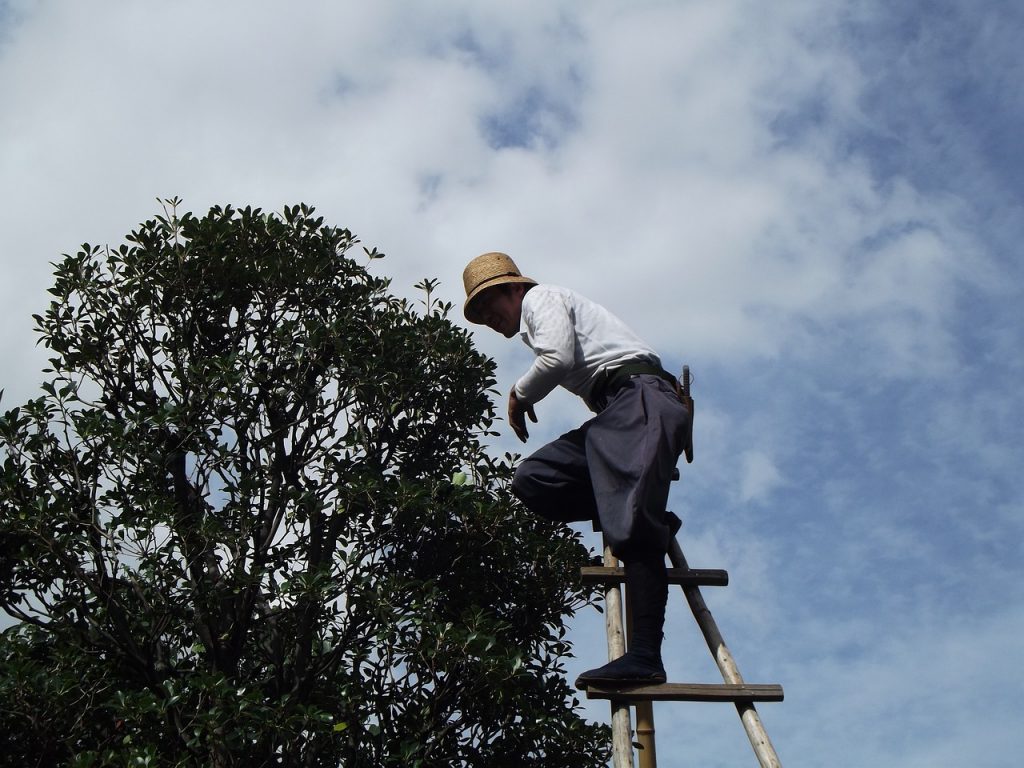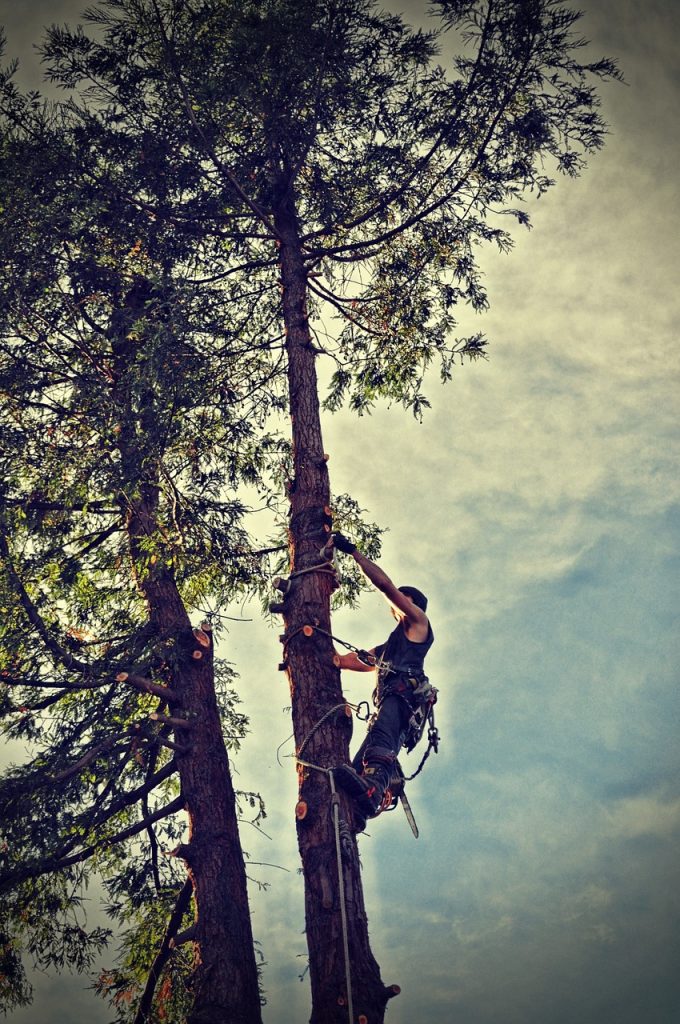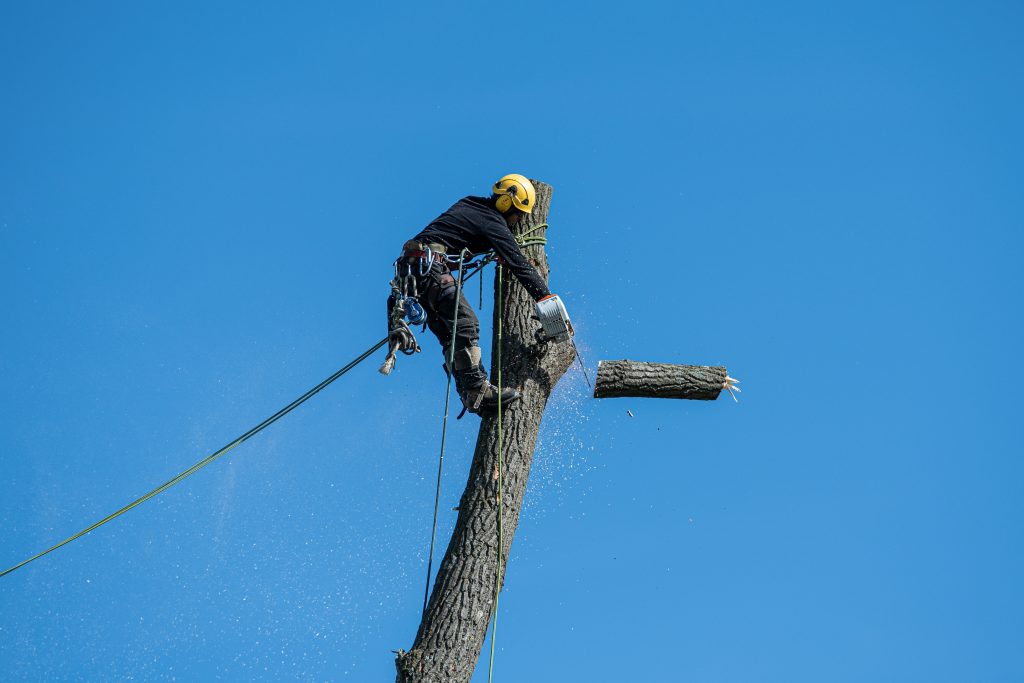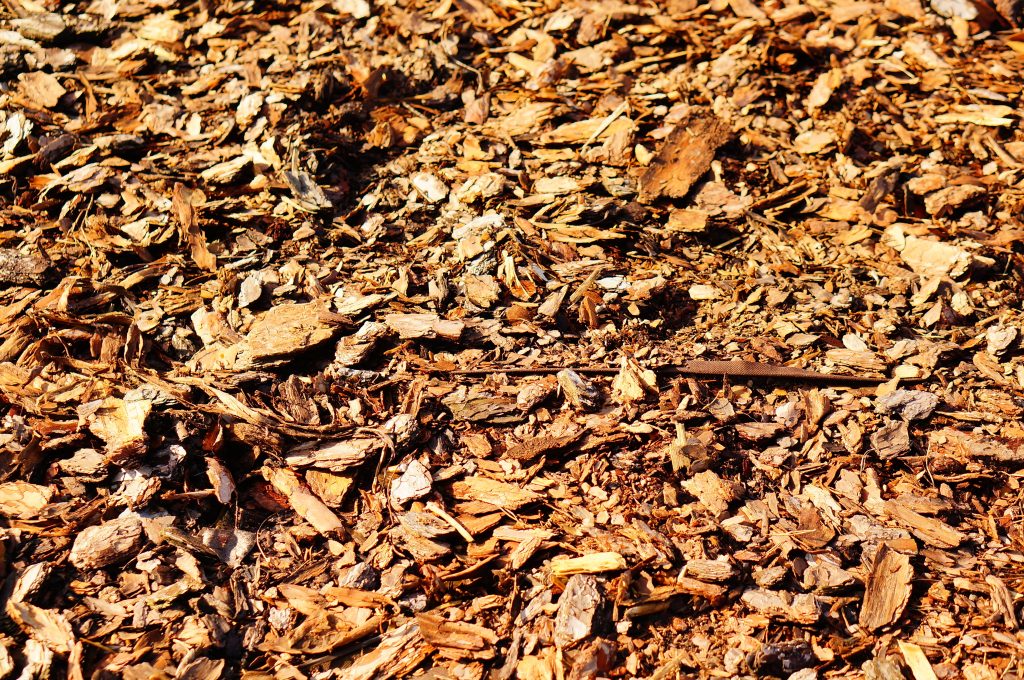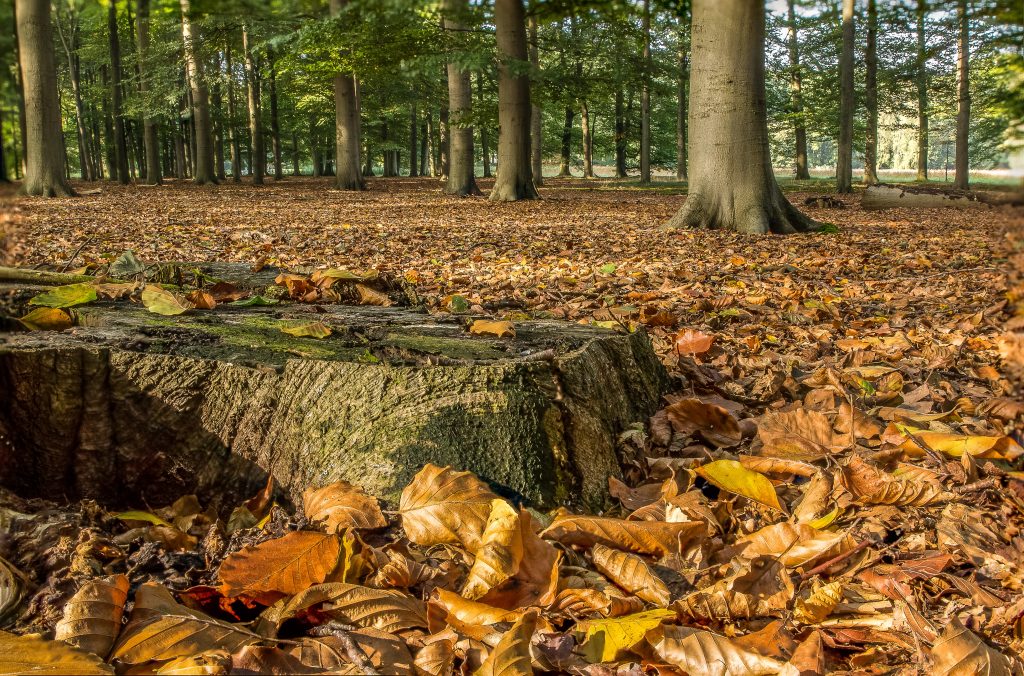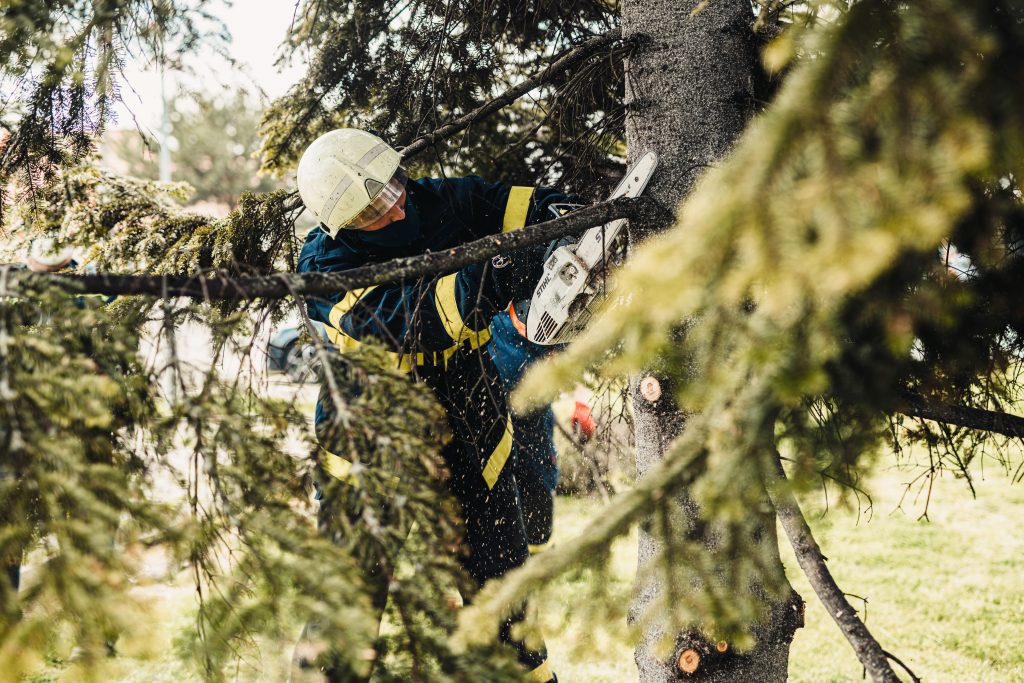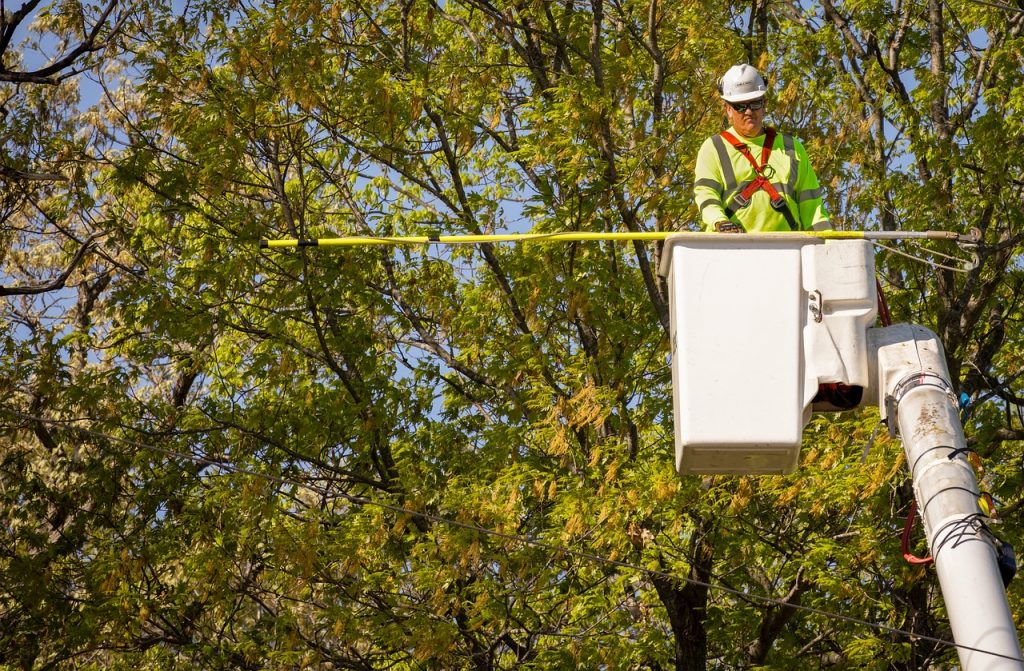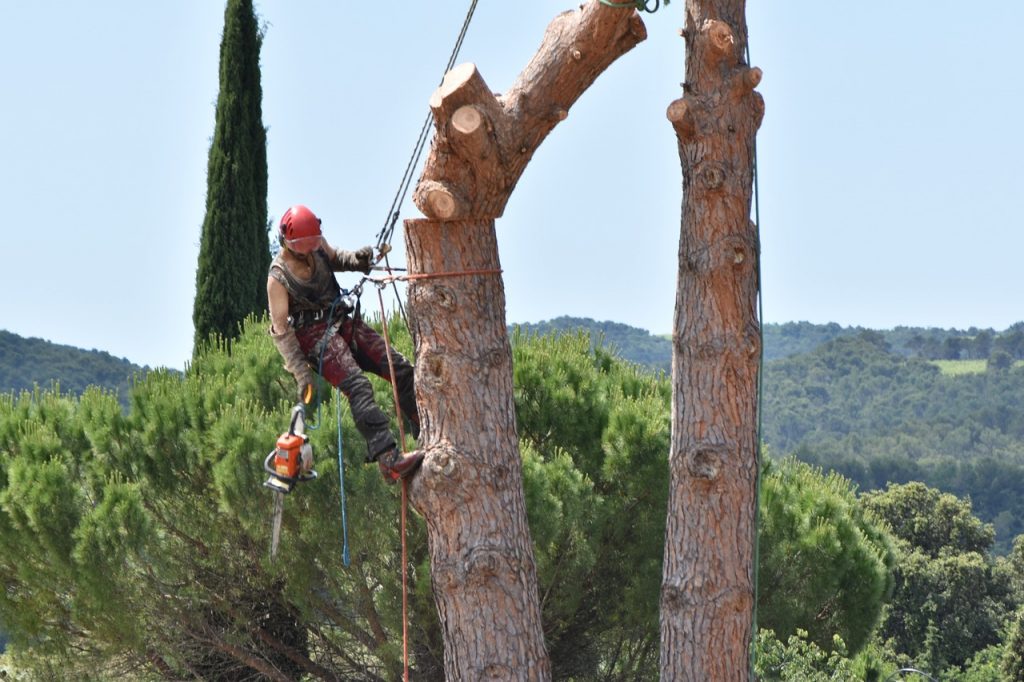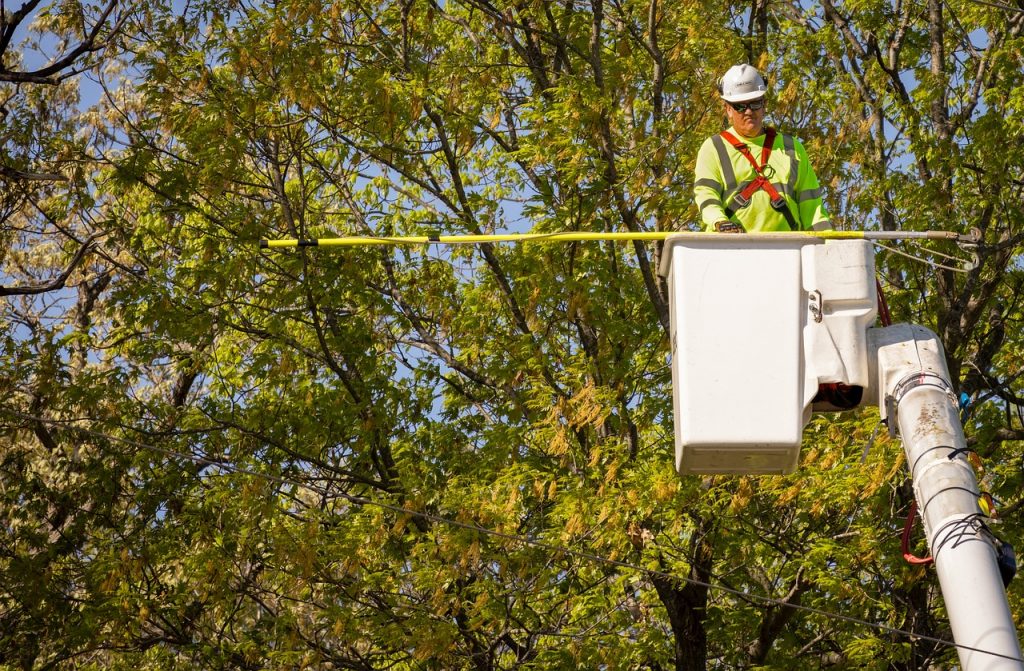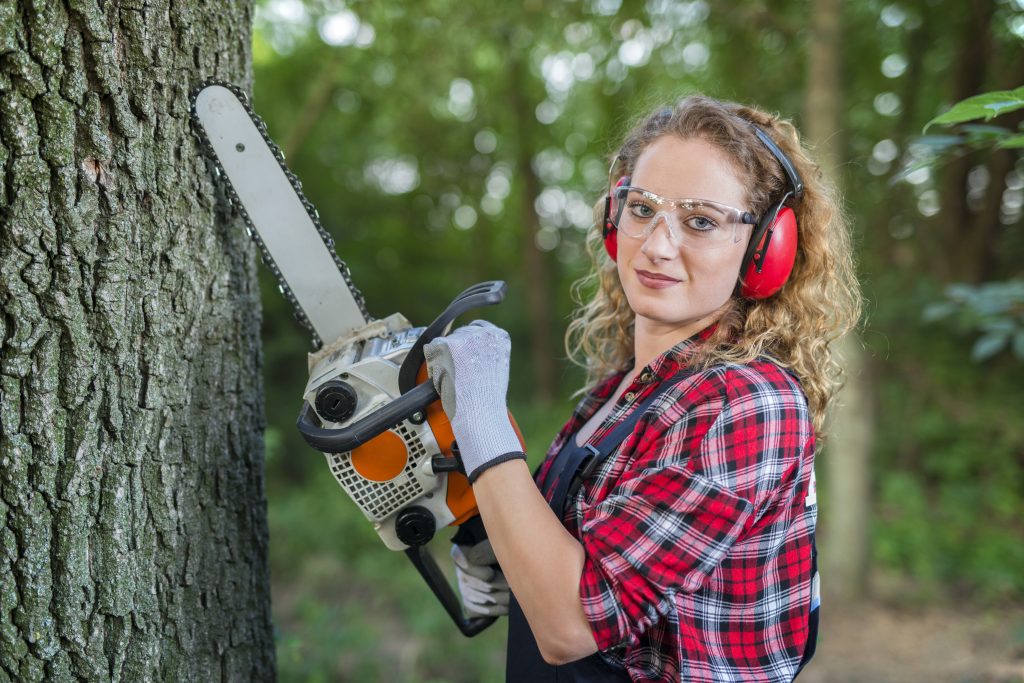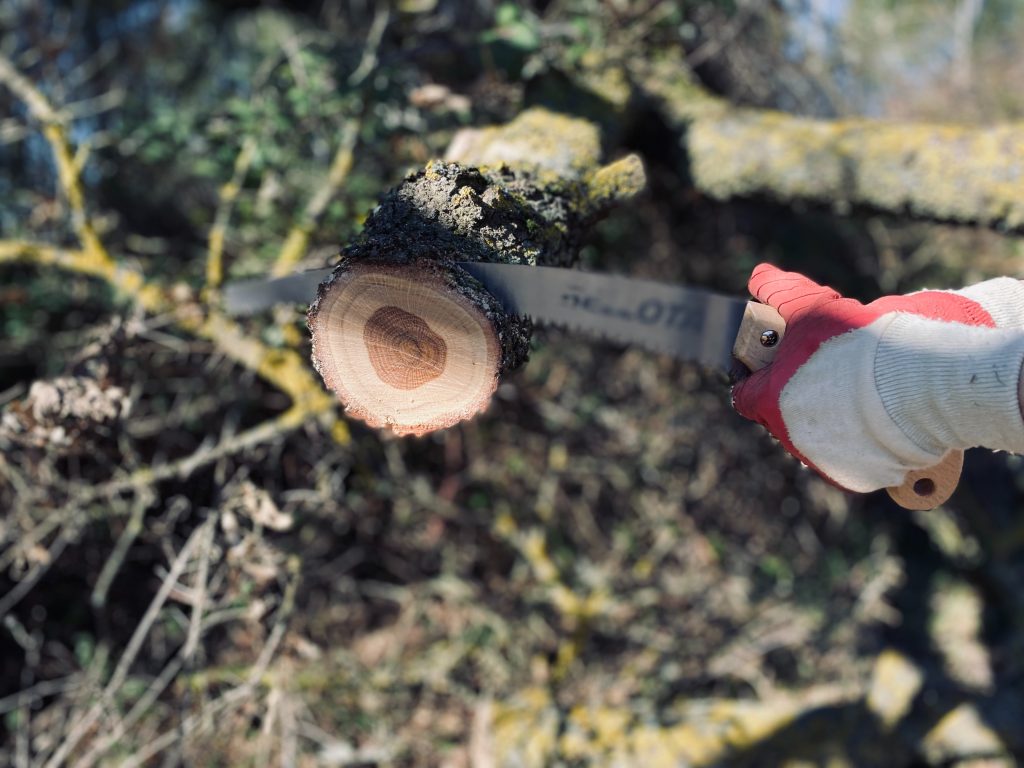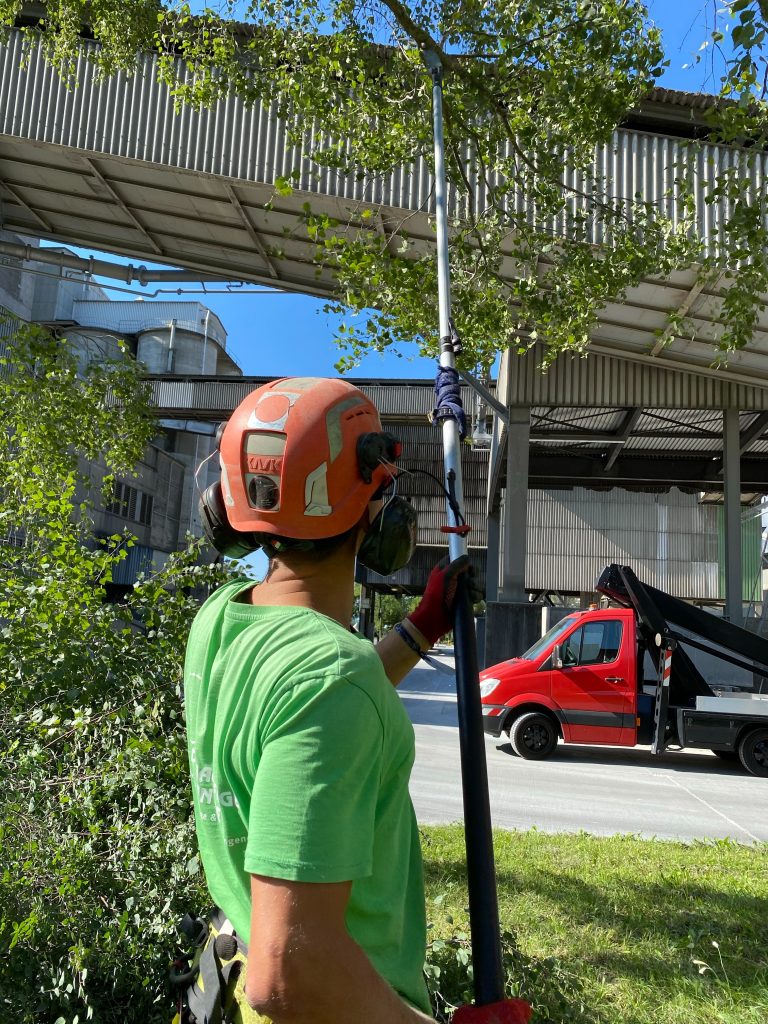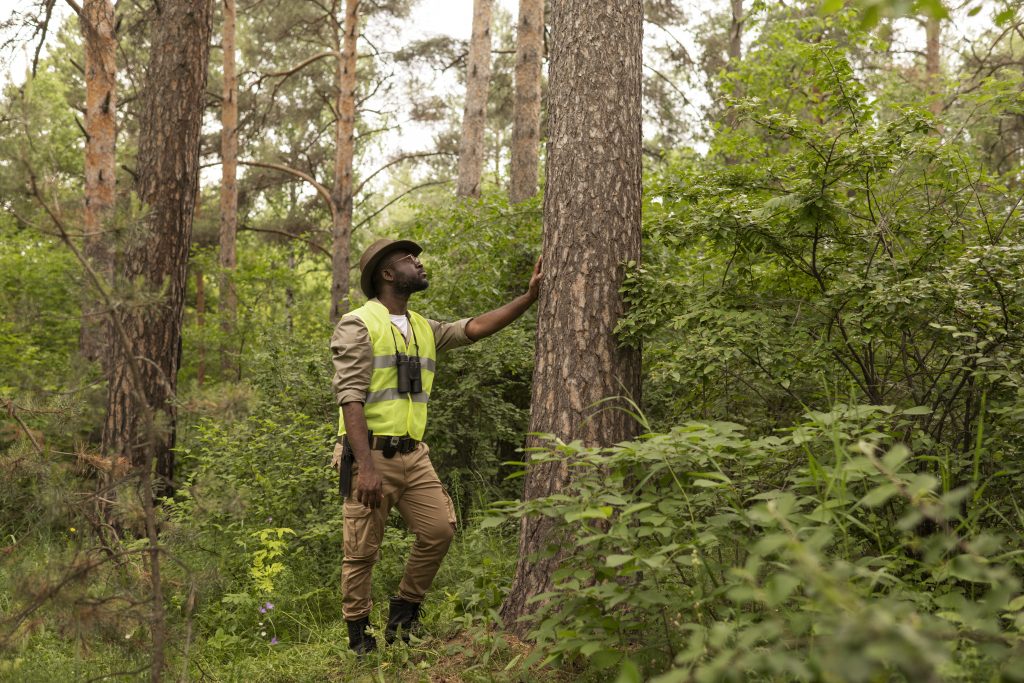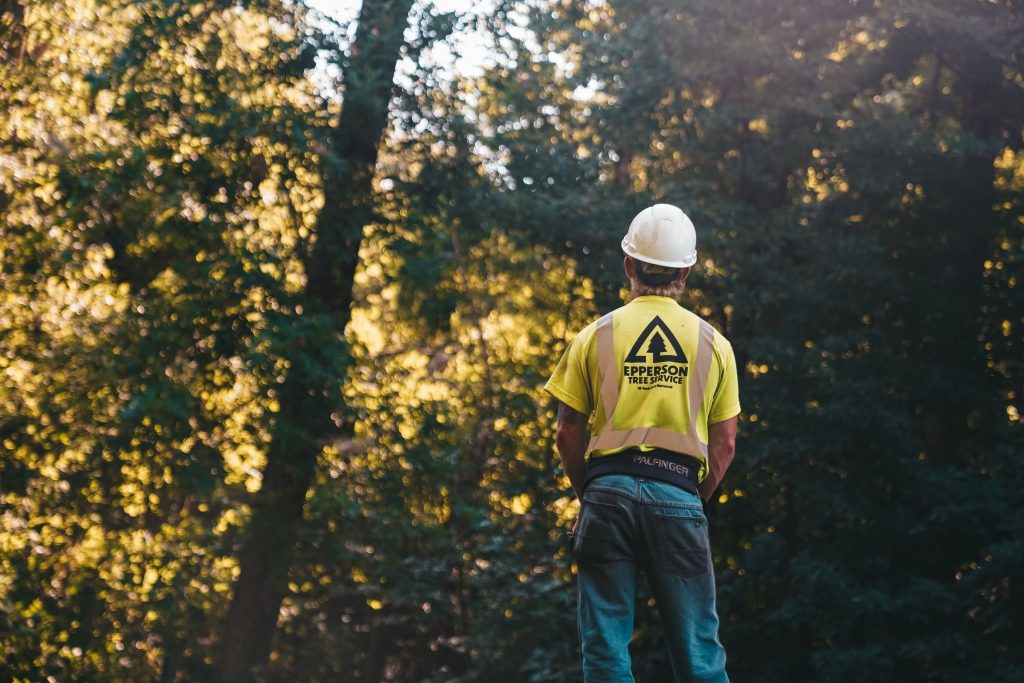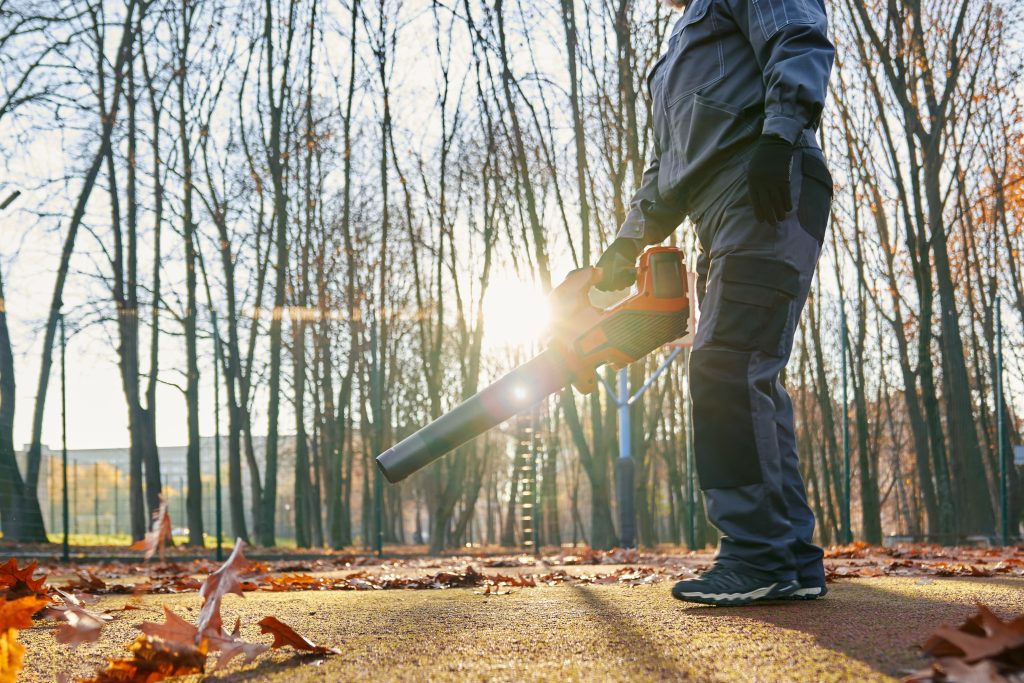Tree Trimming Clearfield UT 84015
This page is about Tree Trimming Clearfield UT 84015
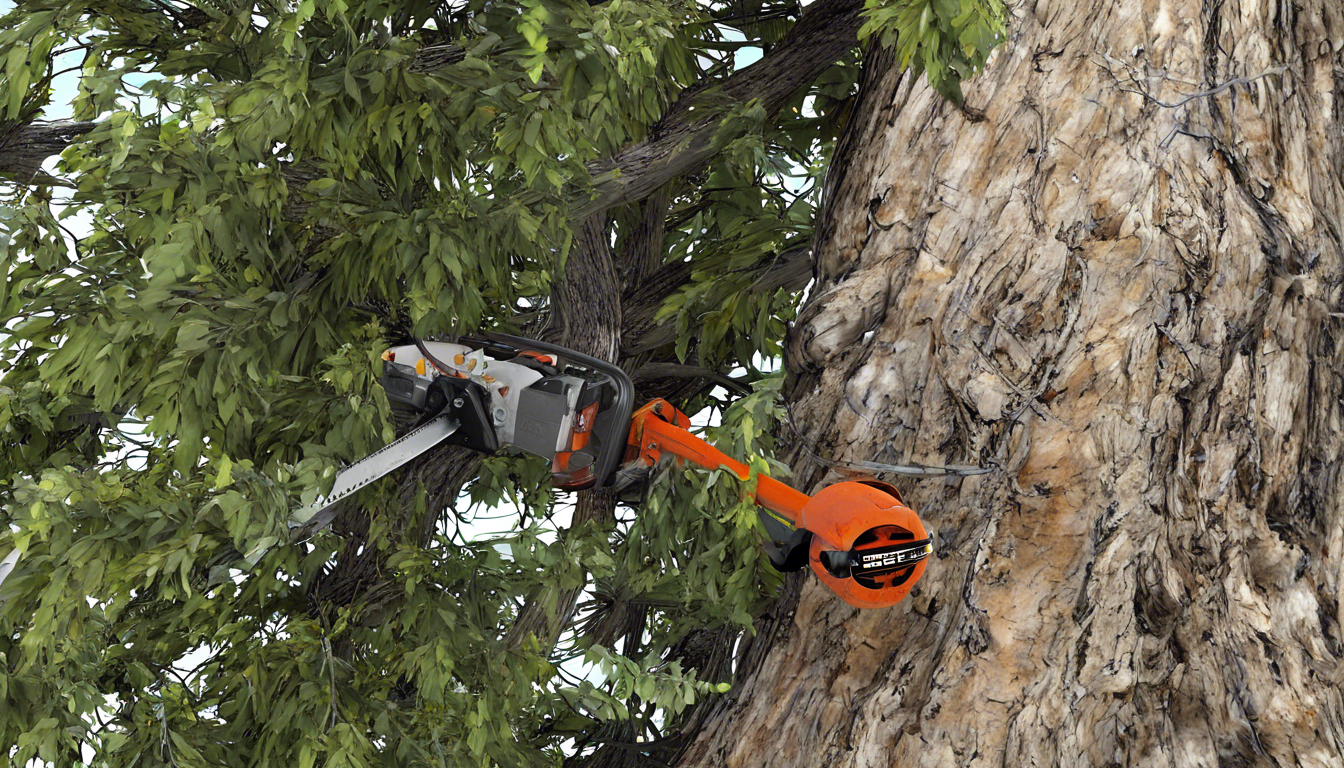
Benefits of Professional Tree Trimming Clearfield UT 84015
Trees play a vital role in enhancing the beauty of outdoor spaces, providing shade, and improving air quality. In Clearfield UT 84015, tree trimming is essential to maintain the health and appearance of trees. While some homeowners may consider trimming their trees themselves, there are distinct benefits to hiring professional tree trimming services.
When it comes to tree trimming, professional arborists in Clearfield UT 84015 have the expertise and experience to ensure the job is done correctly. They possess the knowledge of different tree species, their growth patterns, and the best techniques to trim them without causing damage. Additionally, they have the necessary tools and equipment to reach tall or hard-to-access areas safely.
One of the key benefits of professional tree trimming is the promotion of tree health. Trimming helps to remove dead, diseased, or insect-infested branches, preventing the spread of infections to other parts of the tree. By eliminating these compromised branches, the overall health of the tree is improved, allowing it to thrive and grow vigorously.
Moreover, regular tree trimming promotes proper growth and structure. Professional arborists can identify and correct structural issues such as crossing branches or co-dominant stems that may lead to instability as the tree matures. By pruning the tree properly, its growth is directed in the right direction, ensuring a strong and balanced structure that can withstand various weather conditions.
In addition to health and structural benefits, tree trimming by professionals can enhance the aesthetic appeal of trees and the overall landscape. Well-maintained trees contribute to the curb appeal of a property, increasing its value. Trimming trees regularly also helps in shaping them according to your preferences, whether you desire a more sculpted look or a natural, organic appearance.
Safety is another critical aspect of professional tree trimming. Overgrown branches can pose a risk to the property and individuals, especially during storms or high winds. By keeping trees properly trimmed, the likelihood of branches falling and causing damage is significantly reduced. Professional arborists are trained to assess potential risks and take the necessary actions to mitigate them through strategic trimming.
Furthermore, hiring professional tree trimming services in Clearfield UT 84015 can save homeowners time and effort. Tree trimming is a labor-intensive task that requires skills and equipment that the average homeowner may not have. By outsourcing this work to professionals, homeowners can focus on other responsibilities while ensuring that their trees are well-maintained by experts.
Professional tree trimming in Clearfield UT 84015 offers numerous benefits, including improved tree health, proper growth and structure, enhanced aesthetics, safety, and convenience. By entrusting the care of your trees to experienced arborists, you can ensure the longevity and beauty of your trees for years to come. Consider investing in professional tree trimming services to enjoy these advantages and more.
Importance of Regular Tree Maintenance
Regular tree maintenance is essential for the overall health and well-being of your trees, as well as for the safety and aesthetics of your property. Trees are valuable assets that require care and attention to thrive and remain in good condition. One crucial aspect of tree maintenance is tree trimming, a process that involves removing specific branches to promote growth and ensure the tree’s structural integrity. In Clearfield, UT 84015, tree trimming is particularly important due to the unique climate and environmental conditions in the area.
Benefits of Tree Trimming:
Salt Lake City Tree Trimming Truco Services
- Promotes Tree Health: Tree trimming helps improve the overall health of trees by eliminating dead or diseased branches that could spread infections and harm the tree. It also encourages the growth of new, healthy branches.
- Enhances Tree Appearance: Regular trimming helps shape the tree, promoting a more aesthetically pleasing appearance. It also prevents overgrowth and maintains the tree’s natural form.
- Safety: Trimming removes weak, damaged, or dead branches that could pose a safety hazard. This is especially important in Clearfield, UT 84015, where severe weather conditions can increase the risk of falling branches.
- Increases Sunlight Exposure: Pruning allows more sunlight to reach the inner parts of the tree, promoting photosynthesis and healthy growth.
- Improves Air Circulation: By removing crowded or crossing branches, tree trimming enhances air circulation within the tree canopy, reducing the risk of fungal diseases.
When to Trim Trees:
Tree trimming should ideally be done during the tree’s dormant season, which is typically in late winter or early spring. However, dead or damaged branches can be removed at any time of the year to prevent further decay and promote healing.
Professional Tree Trimming Services:
Salt Lake City Tree Trimming Truco Services
While some tree trimming tasks can be done by homeowners, hiring professional tree trimming services in Clearfield, UT 84015 is highly recommended for larger trees or more complex trimming needs. Certified arborists have the expertise and tools to trim trees safely and effectively, ensuring optimal results without causing harm to the tree.
:
Regular tree trimming is a vital aspect of tree maintenance that offers numerous benefits for both the tree and the property owner. By investing in tree trimming services in Clearfield, UT 84015, property owners can promote tree health, enhance safety, and improve the overall appearance of their trees. Prioritizing tree maintenance not only adds value to the property but also contributes to a healthier and more beautiful environment.
Common Tree Trimming Mistakes to Avoid
Tree trimming is a vital aspect of maintaining the health and aesthetics of your trees. However, it is essential to understand that improper tree trimming practices can have negative consequences on the tree’s health and longevity. To help you avoid common tree trimming mistakes, here are some key points to keep in mind:
- Over Pruning: One of the most common mistakes homeowners make is over pruning their trees. Excessive trimming can weaken the tree, making it more susceptible to diseases and pest infestations. It is important to follow the 25% rule, which recommends not removing more than a quarter of the tree’s foliage in a single trimming session.
- Incorrect Timing: Another common mistake is trimming trees at the wrong time of year. Different tree species have specific optimal pruning times. Trimming trees during the dormant season is generally recommended, as it minimizes stress on the tree and reduces the risk of disease transmission.
- Improper Cutting Techniques: Using incorrect cutting techniques can cause damage to the tree and impede its growth. Always make clean cuts at the right angle to promote healing and prevent infection. Avoid leaving stubs or jagged edges, as they can serve as entry points for pathogens.
- Ignoring Branch Collars: The branch collar is the swollen area where the branch meets the trunk of the tree. It is critical to make cuts just outside the branch collar to promote proper healing. Cutting into the collar can lead to decay and compromise the tree’s structural integrity.
- Trimming Too Close to the Trunk: Cutting branches too close to the trunk, also known as flush cutting, can cause long-term damage to the tree. This practice inhibits the tree’s ability to compartmentalize wounds and increases the risk of decay. It is best to make cuts just outside the branch bark ridge without damaging the collar.
- Salt Lake City Tree Trimming Truco Services
- Ignoring Safety Precautions: Tree trimming can be dangerous work, especially when dealing with large trees or using power tools. Always prioritize safety by wearing appropriate protective gear, using stable ladders or aerial lifts, and knowing when to call in professional arborists for assistance.
- Neglecting Tree Health: Before trimming your trees, assess their overall health and condition. Sick or stressed trees may require special care and attention during trimming to prevent further damage. Consulting with a certified arborist can help determine the best course of action for maintaining the tree’s health.
By avoiding these common tree trimming mistakes and following proper pruning practices, you can promote the growth, health, and beauty of your trees while minimizing the risk of complications. Remember that when in doubt, it is always best to seek professional help from experienced arborists to ensure the optimal care of your trees.
Seasonal Tree Trimming Tips for Utah Residents
Trees are a vital part of the landscape in Clearfield, UT 84015, offering shade, beauty, and environmental benefits. However, proper tree care, including seasonal tree trimming, is essential to maintain their health and appearance. Utah residents need to be aware of the best practices for tree trimming to ensure the well-being of their trees throughout the year.
Importance of Seasonal Tree Trimming
Tree trimming plays a crucial role in maintaining the overall health of trees. Regular trimming helps to remove dead or diseased branches, promoting new growth and preventing the spread of infections. In addition, proper trimming can shape the tree, improve aesthetics, and prevent overgrowth that may pose a hazard during storms. For Utah residents in Clearfield, tree trimming is not just a matter of aesthetics but also a necessity for tree health and safety.
Spring Tree Trimming Tips
In the spring, trees are coming out of dormancy and actively growing. This is an ideal time for light trimming to shape the tree and remove any winter damage. Focus on removing dead or damaged branches and any branches that are crossing or rubbing against each other. Spring is also a good time to inspect for signs of pest infestation or disease and address any issues promptly.
Summer Tree Trimming Guidelines
During the summer months, trees are in full bloom and expending a lot of energy. Limit pruning during this time to avoid stressing the tree. However, it is a good time to trim any excessive growth that may be obstructing visibility or pathways. Be cautious of trimming too much during the hot summer months, as it can leave the tree susceptible to sunburn.
Fall Tree Trimming Recommendations
Fall is an excellent time for tree trimming in Clearfield, UT 84015, as the weather is cooler, and trees are preparing for dormancy. Focus on removing dead or diseased branches before winter sets in. Trimming in the fall can also help trees withstand winter storms by improving their structure and reducing the risk of breakage under heavy snow or ice.
Winter Tree Trimming Considerations
While winter may not seem like an ideal time for tree trimming, it can be beneficial for certain tree species. Dormant pruning in winter can help shape the tree, promote new growth in the spring, and improve overall tree health. Be mindful of winter weather conditions and only trim trees when it is safe to do so.
Salt Lake City Tree Trimming Truco Services
Hiring Professional Tree Trimming Services
While some light trimming can be done by homeowners, it is often best to hire professional tree trimming services for more extensive work. Certified arborists have the expertise and equipment to trim trees safely and effectively, ensuring the health and longevity of your trees.
Tree trimming is a crucial aspect of tree care for Utah residents in Clearfield, UT 84015. By following seasonal tree trimming guidelines and knowing when to trim your trees, you can help maintain their health, beauty, and safety throughout the year. Whether you choose to tackle tree trimming on your own or hire professionals, prioritizing tree care will benefit both your property and the environment.
Enhancing Curb Appeal through Tree Care and Maintenance
Trees are not only essential for the environment but also play a significant role in enhancing the curb appeal of residential and commercial properties. Proper tree care and maintenance, including tree trimming, are crucial aspects of maintaining a visually appealing outdoor space. In Clearfield, UT 84015, residents and property owners can benefit from professional tree trimming services to boost the overall aesthetics of their surroundings.
Tree trimming is a proactive measure that promotes the health and growth of trees while ensuring safety and improving the overall appearance of a property. By removing dead or overgrown branches, tree trimming helps maintain the tree’s shape, prevent disease, and encourage new growth. In Clearfield, UT 84015, where the natural landscape is valued, investing in tree trimming services can significantly enhance the curb appeal of residential and commercial properties.
Proper tree care not only improves the visual appeal of a property but also contributes to its overall value. Well-maintained trees can increase property value by up to 20%. In Clearfield, UT 84015, where pristine outdoor spaces are highly sought after, regular tree trimming can make a significant difference in how a property is perceived. A neatly trimmed tree not only looks aesthetically pleasing but also reflects the care and attention to detail of the property owner.
In addition to enhancing curb appeal, tree trimming also has practical benefits. By removing dead or overhanging branches, tree trimming minimizes the risk of accidents such as falling branches during storms. This preventive measure can help protect buildings, vehicles, and individuals on the property from potential damage or injury. In Clearfield, UT 84015, where inclement weather can pose a threat to trees and surrounding structures, tree trimming is a proactive step towards ensuring safety.
When it comes to tree trimming in Clearfield, UT 84015, entrusting the job to professional arborists is key. Professional tree care specialists have the expertise, tools, and knowledge to trim trees safely and effectively. They can assess the specific needs of each tree, determine the best trimming techniques, and ensure that the job is done in a precise and controlled manner. By hiring certified arborists for tree trimming services, property owners can rest assured that their trees are in good hands.
Regular tree trimming is not just a task to be checked off the list but a crucial aspect of property maintenance that can yield long-term benefits. In Clearfield, UT 84015, where the natural landscape adds to the charm of residential and commercial areas, investing in tree trimming is a wise decision. By enhancing curb appeal, improving safety, and increasing property value, tree trimming plays a vital role in creating inviting and well-maintained outdoor spaces for everyone to enjoy.
Tree trimming in Clearfield, UT 84015, is a valuable investment for property owners looking to boost curb appeal and ensure the health and safety of their trees. By enlisting the services of professional arborists, property owners can achieve visually appealing outdoor spaces that leave a lasting impression. Prioritizing tree care and maintenance not only enhances the aesthetics of a property but also contributes to its overall value and desirability in the local real estate market.
Key Takeaway:
Professional tree trimming in Clearfield UT 84015 offers numerous benefits that go beyond just aesthetic appeal. By investing in expert tree care services, homeowners can ensure the overall health and longevity of their trees while also enhancing safety on their property.
Salt Lake City Tree Trimming Truco Services
Regular tree maintenance is crucial in preserving the vitality of trees and preventing potential hazards. Proper trimming helps promote growth, improves tree structure, and minimizes the risk of falling branches during storms or high winds. Additionally, regular inspections conducted by professionals can identify early signs of disease or pest infestations, allowing for timely intervention to save the tree.
To maximize the benefits of tree trimming, it is important to avoid common mistakes such as over-pruning, trimming at the wrong time of year, and using improper tools. Over-pruning can weaken the tree and make it more susceptible to diseases, while trimming during the active growth period can stress the tree. Using dull or incorrect tools can result in uneven cuts that hinder proper healing.
Utah residents can benefit from seasonal tree trimming tips tailored to the region’s climate. For example, trimming in late winter or early spring can stimulate new growth, while trimming in the fall helps prepare trees for the harsh winter months. Understanding the specific needs of trees in Utah can ensure optimal health and resilience throughout the year.
Enhancing curb appeal through tree care and maintenance is a valuable investment for homeowners. Well-maintained trees contribute to a visually appealing landscape, increase property value, and create a welcoming atmosphere. By incorporating tree care into regular maintenance routines, homeowners can enjoy a beautiful and safe outdoor environment for years to come.
Conclusion
In Clearfield UT 84015, professional tree trimming services offer numerous benefits that go beyond just aesthetic appeal. By enlisting the expertise of skilled arborists, homeowners can ensure the health and longevity of their trees while also safeguarding their property and loved ones. Regular tree maintenance is crucial in preventing potential hazards such as falling branches or tree failure. Moreover, it enhances the overall appearance of the landscape and can increase property value.
While tree trimming is essential, it is equally important to avoid common mistakes that could harm the trees or compromise their growth. Improper pruning techniques, such as topping or over-thinning, can weaken the tree’s structure and lead to health issues. It is advisable to hire professionals who understand the specific needs of each tree species and can execute precise trimming to promote healthy growth.
Utah residents can benefit from seasonal tree trimming tips to ensure their trees thrive in the region’s unique climate. Proper timing of tree trimming, depending on the species, can prevent stress and promote recovery. For example, pruning deciduous trees during the dormant season in late winter or early spring can stimulate growth once the weather warms up. On the other hand, evergreen trees are best trimmed in late winter when they are least active.
Enhancing curb appeal through tree care and maintenance is a strategic way to elevate the overall look of any property. Well-maintained trees not only beautify the landscape but also create a welcoming environment for residents and visitors alike. By investing in professional tree trimming services, homeowners in Clearfield UT 84015 can ensure that their trees remain healthy, vibrant, and visually appealing throughout the year.
Prioritizing professional tree trimming in Clearfield UT 84015 is a wise investment that yields long-term benefits for both homeowners and their surrounding environment. By understanding the significance of regular tree maintenance, avoiding common pruning mistakes, following seasonal trimming guidelines, and enhancing curb appeal through tree care, residents can enjoy healthy, beautiful trees that enhance the value and aesthetics of their property. Remember, when it comes to tree trimming, the key is to promote health, safety, and visual appeal simultaneously. By partnering with experienced arborists, homeowners can achieve optimal results and create a harmonious balance between nature and urban living.
Salt Lake City Tree Trimming Truco Services
If you need a tree service in Utah, you can call:
Truco Services, Inc.
4640 Commerce Drive
Murray, Utah 84107
(801) 466–8044
https://truetreeservices.com/
About Murray, Utah
Murray is a city situated on the Wasatch Front in the core of Salt Lake Valley in the U.S. state of Utah. Named for territorial governor Eli Murray, it is the state's fourteenth largest city. According to the 2020 census, Murray had a population of 50,637. Murray shares borders with Taylorsville, Holladay, South Salt Lake and West Jordan, Utah. Once teeming with heavy industry, Murray's industrial sector now has little trace and has been replaced by major mercantile sectors. Known for its central location in Salt Lake County, Murray has been called the Hub of Salt Lake County. Unlike most of its neighboring communities, Murray operates its own police, fire, power, water, library, and parks and recreation departments and has its own school district. While maintaining many of its own services, Murray has one of the lowest city tax rates in the state.
Neighborhoods in Murray, Utah
Murray Oakes, Grant Park, Southwood Park, Murray Park, Murray Park Restrooms, Willow Pond Park, Neighborhood Veterinary Care
Things To Do in Murray, Utah
Bus Stops in Murray, Utah to Truco Services, Inc.
Bus Stop in Murray Central Station (Bay C) Murray, Utah to Truco Services, Inc.
Bus Stop in State St @ 4801 S Murray, Utah to Truco Services, Inc.
Bus Stop in Murray North Station Murray, Utah to Truco Services, Inc.
Bus Stop in State St @ 4949 S Murray, Utah to Truco Services, Inc.
Bus Stop in Murray Central Frontrunner/Trax Station Murray, Utah to Truco Services, Inc.
Bus Stop in Murray Blvd / Vine St (SB) Murray, Utah to Truco Services, Inc.
Bus Stop in State St @ 3925 S Murray, Utah to Truco Services, Inc.
Bus Stop in State St @ 4824 S Murray, Utah to Truco Services, Inc.
Bus Stop in State St @ 5223 S Murray, Utah to Truco Services, Inc.
Bus Stop in Murray Blvd / Allendale Dr (NB) Murray, Utah to Truco Services, Inc.
Bus Stop in Murray Blvd @ 5039 S Murray, Utah to Truco Services, Inc.
Bus Stop in State St @ 4721 S Murray, Utah to Truco Services, Inc.
Driving Directions in Murray, Utah to Truco Services, Inc.
Driving Directions from Woodruff Tree Trimming and Removal to 4640 Commerce Dr, Murray, UT 84107, USA
Driving Directions from Reliable Tree Care to 4640 Commerce Dr, Murray, UT 84107, USA
Driving Directions from Tree Pro-Tech to 4640 Commerce Dr, Murray, UT 84107, USA
Driving Directions from Prestige Tree And Landscape to 4640 Commerce Dr, Murray, UT 84107, USA
Driving Directions from Excellence Tree & Landscape to 4640 Commerce Dr, Murray, UT 84107, USA
Driving Directions from Amen Trees to 4640 Commerce Dr, Murray, UT 84107, USA
Driving Directions from Tim's Tree Care to 4640 Commerce Dr, Murray, UT 84107, USA
Driving Directions from Jordan Tree Service - Murray to 4640 Commerce Dr, Murray, UT 84107, USA
Driving Directions from Arbor Works to 4640 Commerce Dr, Murray, UT 84107, USA
Driving Directions from Diamond Tree Experts to 4640 Commerce Dr, Murray, UT 84107, USA
Driving Directions from Green Tree Arborist to 4640 Commerce Dr, Murray, UT 84107, USA
Driving Directions from TruCo Services to 4640 Commerce Dr, Murray, UT 84107, USA
Reviews for Truco Services, Inc. Murray, Utah
Emily Abercrombie
We had a great experience with TruCo! They were well priced, responsive and prompt. Michael was a pleasure to work with and gave us advice on which plants to put in where we took out our ugly old shrubs. I would highly recommend this company!!!
Michelle Turpin
TruCo Services gets 5 stars from us for customer service. We experienced a few issues with their services this last year and Rob Eccles in senior management, stepped in and immediately handled our issues. He was very committed to making sure they understood our expectations and would execute to make us happy.
Siobhan Billingsley
I work for a property management company and have the pleasure of working with Rob at a community in Sandy. He has been incredible to work with and always responds in a timely manner. He knows all the homeowners by name and address and is aware of all the "problem" areas when it comes to sprinklers. I never have to worry about following up with him because he always reaches out to provide me with an update. If you're looking to work with someone who takes pride in their job, is professional, and can solve the worst landscaping problems thrown your way, Rob is your guy. Thank you, Rob for all you do!
Jaime S.
We have used Truco at 2 of the complexes we manage, they have been great to work with. Good quality service, outstanding customer service with good communication. That's hard to find these days. I highly recommend them. Travis has been awesome to work with.
Jerusha Smart
We use TruCo for a majority of our properties and our home. While other landscaping companies we use come and go for various reasons like cost, communication issues, work performance, etc., TruCo is always consistent in price and work. Also, Rob is the best.
